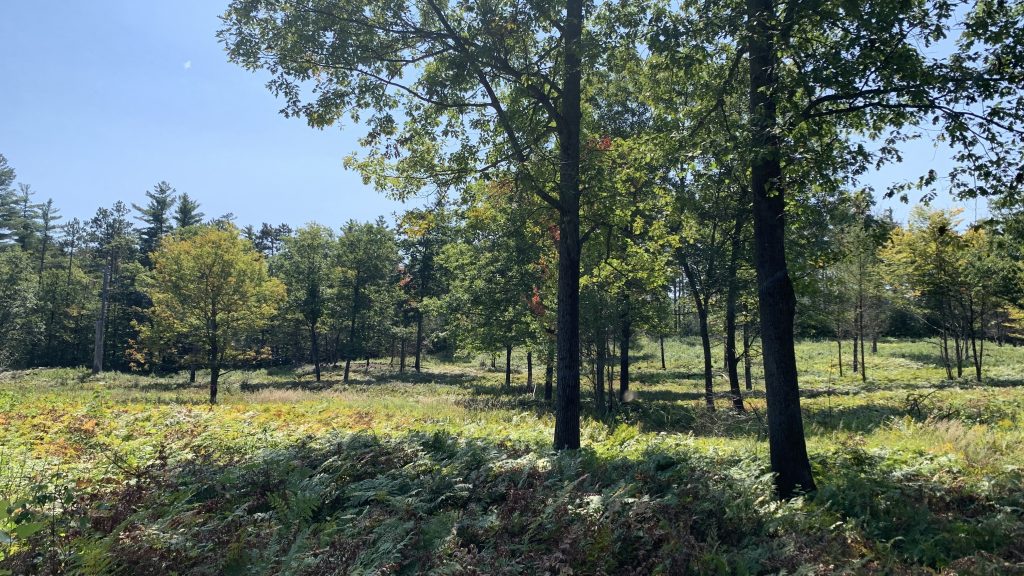NWTF Expands Habitat Enhancement in the White Mountain National Forest
Thanks to the dedicated NWTF volunteers in New Hampshire, the USDA Forest Service and the New Hampshire State Conservation Committee, over 56 acres of wildlife openings have recently been restored in the rugged terrain of the White Mountain National Forest.
These newly established wildlife openings will provide significant value to wild turkeys and enhance the ecological health of the national forest. Moreover, the work contributes to the NWTF's new Forest and Flocks Initiative.
The catalyst for this project was a nearly $30,000 grant awarded to the NWTF from the New Hampshire State Conservation Committee via the Moose Plate Grant. Since 1946, the NHSCC has provided Moose Plate funds to support essential conservation activities throughout the state, and the recent work on the White Mountain National Forest was no exception.
With additional contributions from the New Hampshire NWTF State Chapter and stewardship funds from the Forest Service, partners were able to leverage funds from the Moose Plate grant to garner an additional $81,000 and accomplish over 50 acres worth of wildlife openings within the national forest.
"The Moose Plate Grant we received was a tremendous shot in the arm for our conservation efforts in New Hampshire," said Matt DiBona, NWTF New England district biologist. "It allowed us to leverage NWTF and Forest Service funds to have a larger conservation impact that would not have been possible otherwise. We're very grateful to everyone in New Hampshire who purchases a moose plate and supports conservation efforts in the Granite State!"

Permanent forest openings are an important habitat feature in New Hampshire's forested landscapes. These areas tend to be characterized by a mixture of grasses, forbs and shrubs, providing excellent foraging and brood-rearing habitat for turkeys, attractive vegetation for a variety of pollinators and foraging opportunities for deer, bears and many other wildlife species.
The management plan for the White Mountain National Forest calls for 1% of the forest to be managed as permanent openings.
"Despite their relatively small presence on the forested landscape, evening maintaining 1% of the national forest as managed openings is challenging because without regular disturbance, typically mowing or prescribed fire, these openings will gradually revert back to forest," DiBona said. "As fields give way to saplings, it takes larger and more costly equipment to maintain these areas as early successional habitat. This was the case with the recent work in the White Mountain National Forest and why NWTF was able to collaborate and partner around this resource concern. This type of mastication work can be expensive, often costing $1,500 to $2,000 an acre."
Thanks to these types of partnership efforts, the Forest Service is closer to reaching its 1% management objective. Now that the openings have been restored, they will be maintained using a mix of mowing and prescribed fire in the future.


NWTF's partnership with the White Mountain National Forest began in 2020 when their first stewardship agreement was signed. That work translated to nearly 50 acres of forest wildlife openings being completed in both Maine and New Hampshire in 2021. The Forest Service has introduced fire at some of the openings that were completed in 2021, and the results have been significant (see below).

The recent acreage enhanced on the White Mountain National Forest will contribute to the NWTF's Forests and Flocks' 10-year, 100,000-acre goal.
The NWTF launched Forests and Flocks this year with a vision to prevent future turkey declines by addressing the bird's annual cycle needs and investing in vital research. This initiative, with its long-term focus and overarching approach, strives to create robust wild turkey populations and healthy ecosystems through science-backed habitat management.
The forest openings in the White Mountain National Forest will contribute to the initiative by creating nesting habitat for turkeys in the spring and brood-rearing habitat in the summer.
